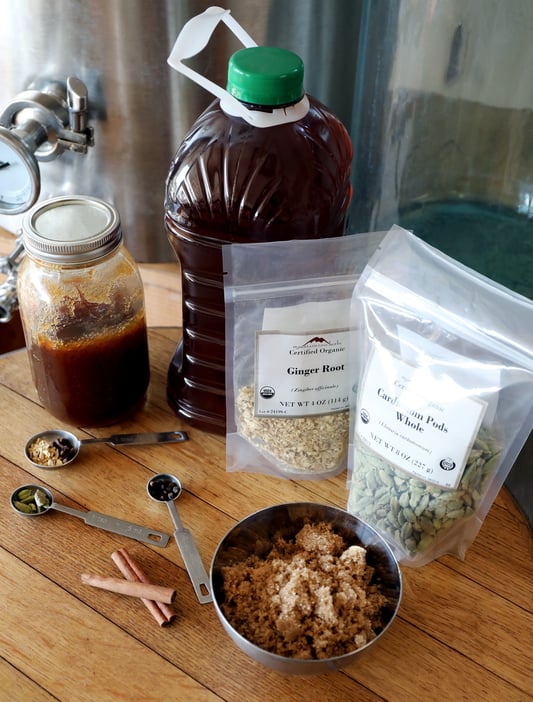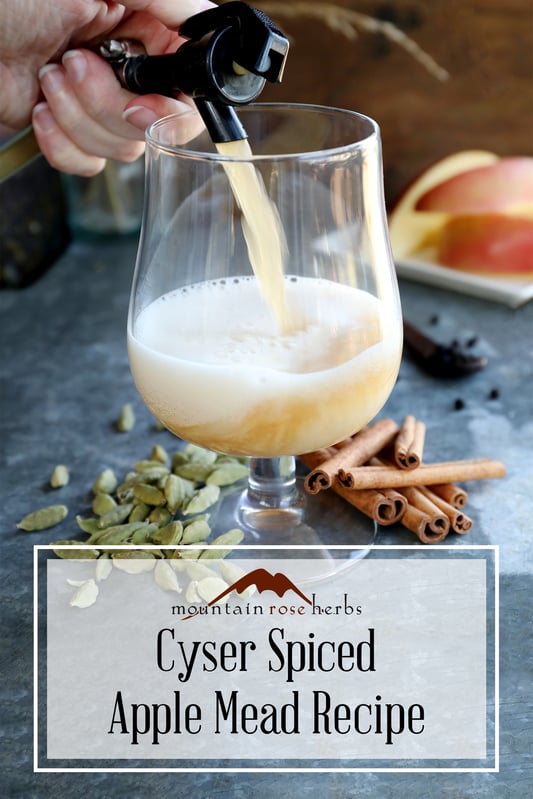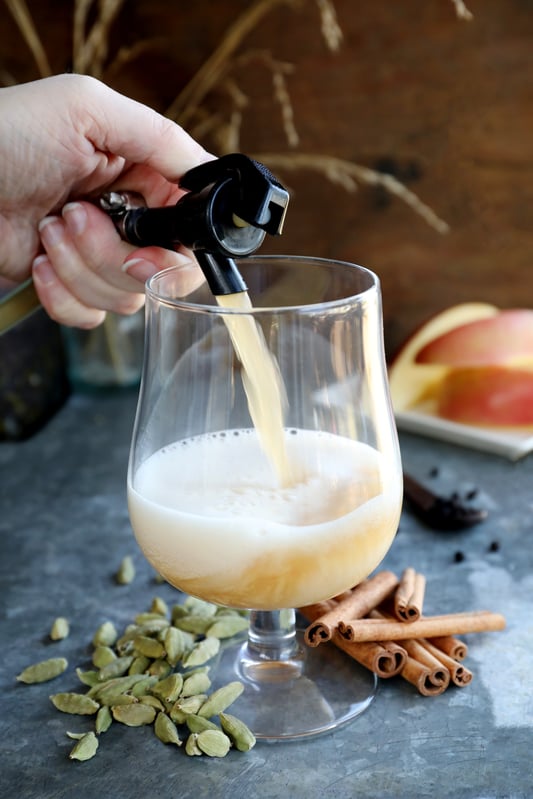
Thanks to pop culture references from blockbusters like Harry Potter and Game of Thrones, mead is experiencing a renaissance. For years, this delicious golden nectar has been saddled with a reputation of being overly sweet, or only to be enjoyed while at a medieval festival or dinner. But no longer! Mead has retaken a seat at the craft beverage table with many metheglins (spiced meads) and fruited meads leading the way. I’ve enjoyed meads with traditional culinary herbs including saffron, cacao nibs, vanilla, ginger, chilies, and cinnamon, as well as more traditional brewing herbs such as mugwort, yarrow, juniper berries, and hops.
Mead brewed with apple cider added is called a cyser. Cyser is a beverage with a rich history, which includes being the roots of wassail. While your first association with wassail might be caroling in snow filled streets, it was a delicious drink long before it was a family holiday tradition. Wassail started as a simple cyser—mead with roasted apples added to the simmering pot. Over the years, spices were added and the base evolved to include wine, beer, and spirits. These various beverages all took on the moniker of mulled and are usually served warmed. When autumnal vibes and sweater weather set in, I yearn for a warmed glass of this spiced cyser, but it’s also delectable cold. Be sure to save a few bottles to enjoy year-round!
This recipe is loosely based on Ken Shramm's recipe for Fall's Bounty Cyser which is available in his book, The Compleat Meadmaker. I’ve added an array of traditional mulling spices, including organic ginger, cinnamon, and nutmeg. I also dropped the amount of added sugars to lower the final alcohol a few points. Before beginning, I recommend getting acquainted with the mead making process, proper cleaning and sanitization procedures, your local homebrew store, and a local apiary if one is available.
Homemade Spiced Cyser Recipe
Makes 5 gallons.
Active time: 45 minutes
Estimated starting gravity (og): 1.10 (26 Brix)
Ingredients
- 6 lbs. raw, local honey (roughly 2 quarts)
- 5 gallons organic apple cider (freshly pressed is best, if available)
- 2 lbs. organic brown sugar
- 3 organic cinnamon sticks
- 2 tsp. organic whole allspice berries
- 1 tsp. organic ginger root
- 1 tsp. organic whole cardamom pods
- 1 tsp. organic whole cloves
- 1 organic whole nutmeg
- 1/2 tsp. organic black peppercorns
- 1 package white wine yeast, such as Lalvin D47
- Go-Ferm or Go-Ferm Protect
- Fermaid O
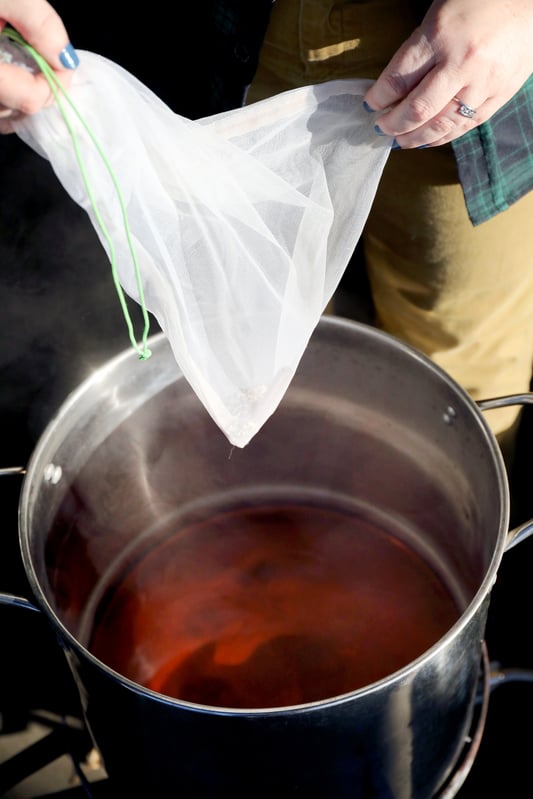
Equipment
- Large kettle
- Reusable hop sack, cheesecloth, or large tea ball
- Funnel
- 5- or 6-gallon carboy or food-grade fermentation vessel
- Thermometer
- Hydrometer
- Airlock
- Rubber stopper that fits your fermentation vessel
- Sanitizer
Directions
- In a large kettle, combine 1 to 2 gallons apple juice with brown sugar. If your apple juice is unpasteurized, boil all 5 gallons.
- Bring to a boil.
- Add spices to reusable hop sack, cheesecloth, or large tea ball.
- Place spices in kettle.
- Simmer for 10 minutes.
- Steep for 10 minutes.
- Rehydrate yeast according to manufacturer directions.
- Allow to cool to around 120° F.
- Add honey and stir to combine.
- Sanitize funnel and fermentation vessel.
- Pour mixture into fermentation vessel.
- Add remaining apple juice.
- Chill to about 65° F.
- Using a hydrometer, take a starting gravity reading.
- Use starting gravity to calculate nutrient additions with the TONSA 2.0 calculator.
- Pitch yeast and first nutrient addition.
- Sanitize airlock and stopper.
- Seal fermentation vessel with stopper and airlock.
- Shake vigorously to oxygenate.
- Make subsequent nutrient additions as calculated.
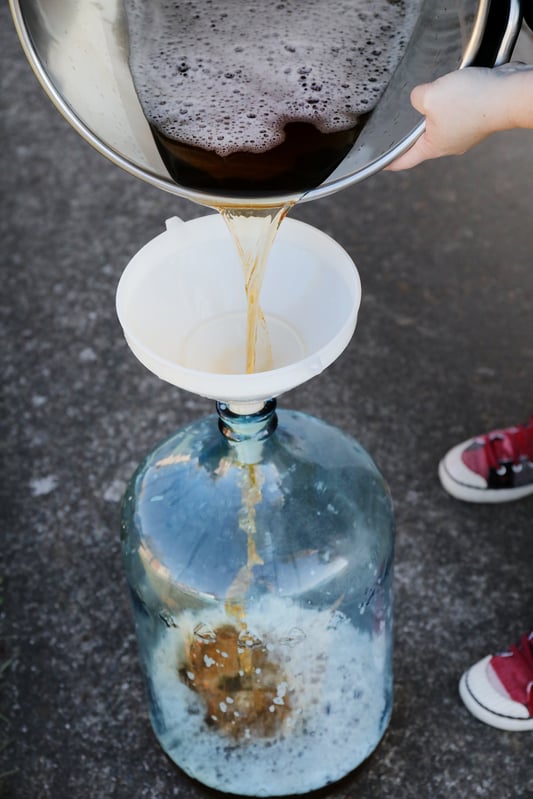
Pro tips:
- If you want to hit the easy button for a spiced cyser or mead, our organic Firefly Chai hits all the spice notes, and the rooibos tea adds soft floral and vanilla notes.
- Don’t worry if your starting gravity is different from mine! The gravity of cysers will vary depending on the amount of sugar in your apple cider. From year to year, my gravities have been as low as 1.080 and as high as 1.125.
- Placing the honey in a warm water bath while you heat the cider will make pouring it out of the container much easier.
- If you don’t own a wort chiller, you can expedite the chilling process by gently placing the fermentation vessel in a cold-water bath with ice packs. A big cooler or kitchen sink work great. Swirl occasionally to aid in heat transfer.
- Using the TONSA 2.0 protocol is not required, however using staggered nutrient additions and degassing your mead will help keep your yeast healthy, happy, and productive. This greatly reduces the time it takes to enjoy your first sip, though it will age wonderfully on its own if you can stand to wait!
- To help ensure that you don’t miss a nutrient addition, set reminders before you navigate away from the calculator.
- Don’t fret if your mead tastes hot or overly alcoholic when fresh, as those flavors will meld with time.
Looking for More Delicious Botanical Beverage Recipes?
Explore Herbal Homebrewing
You may also enjoy:

